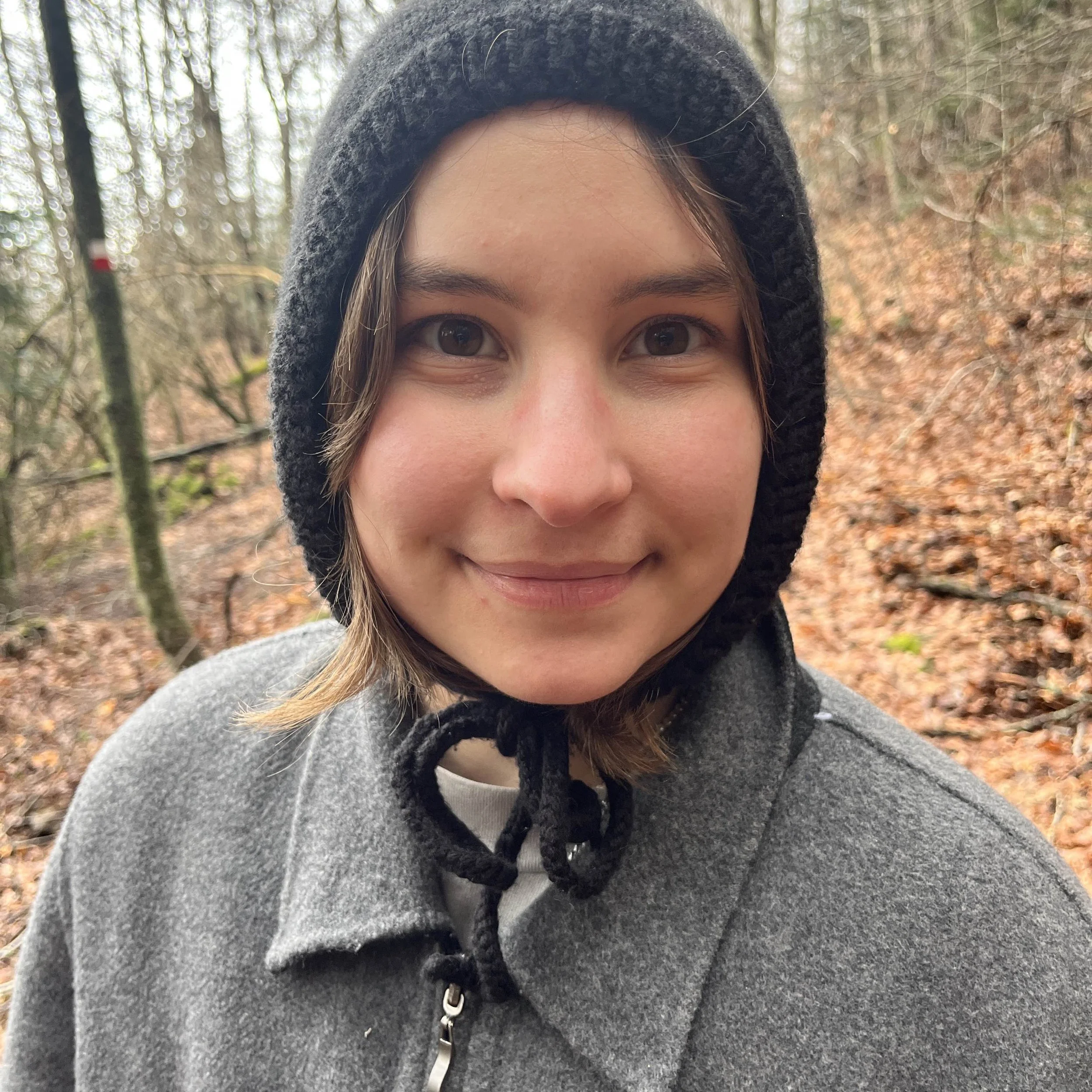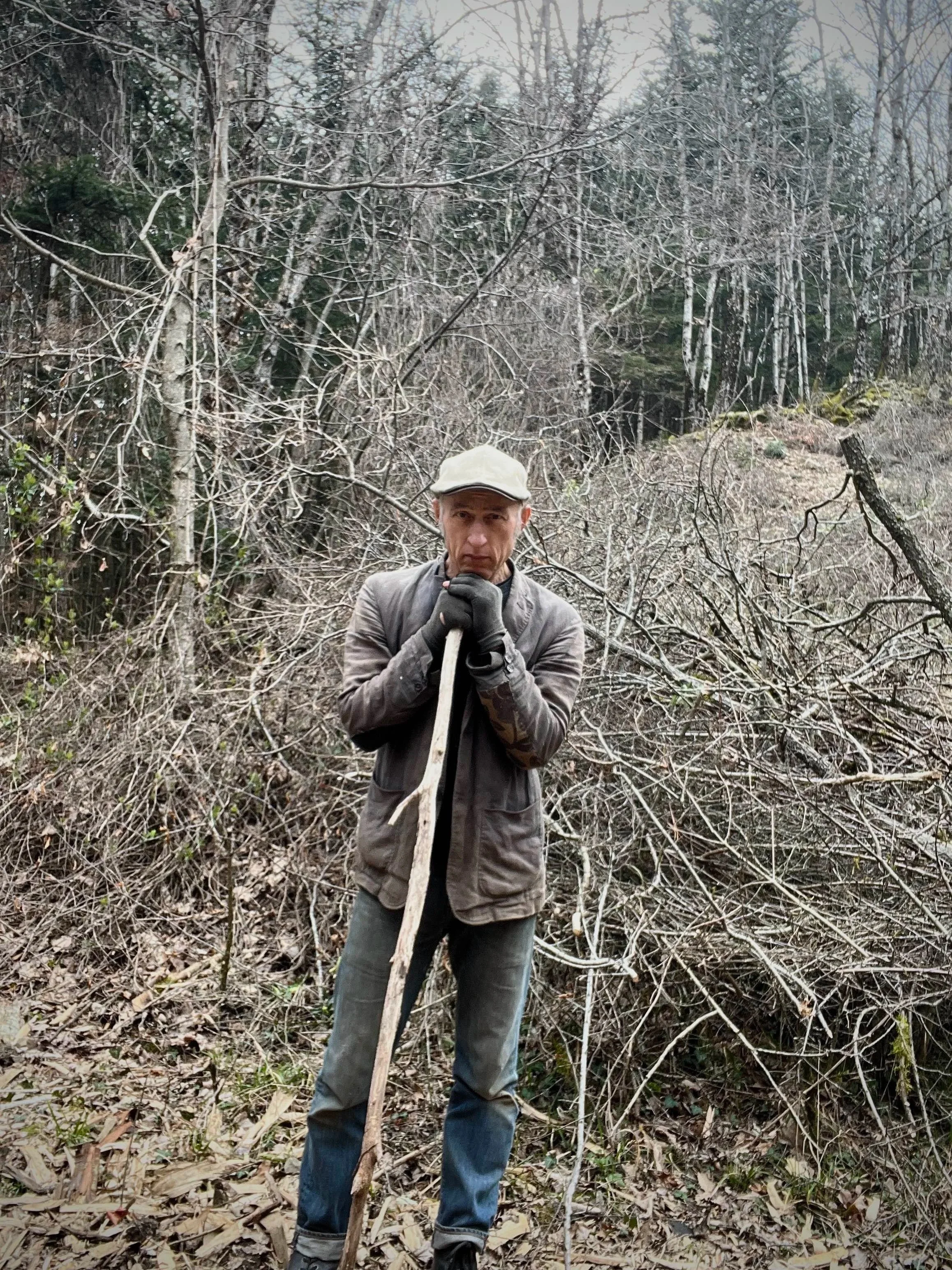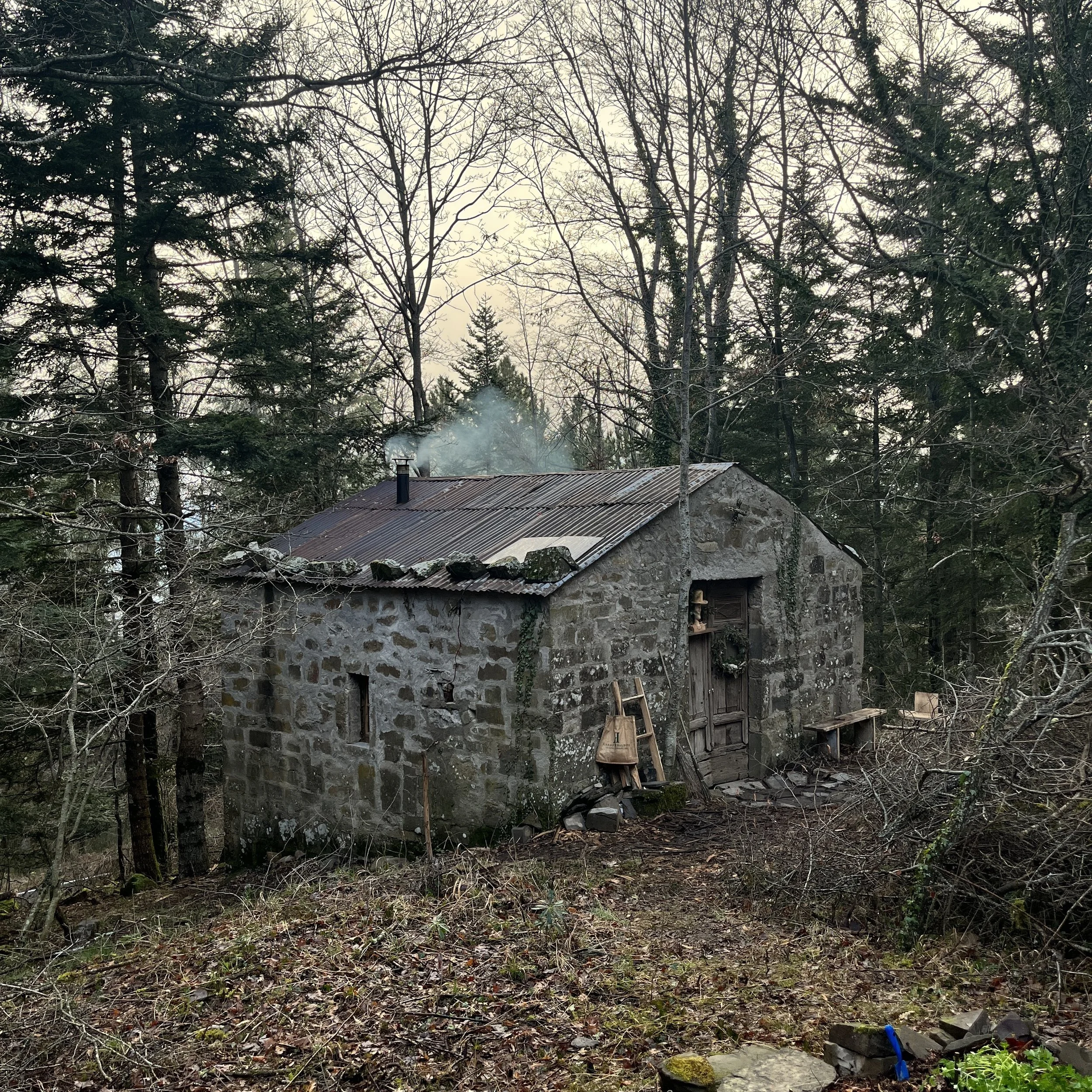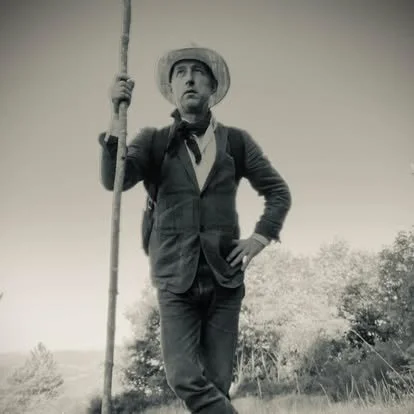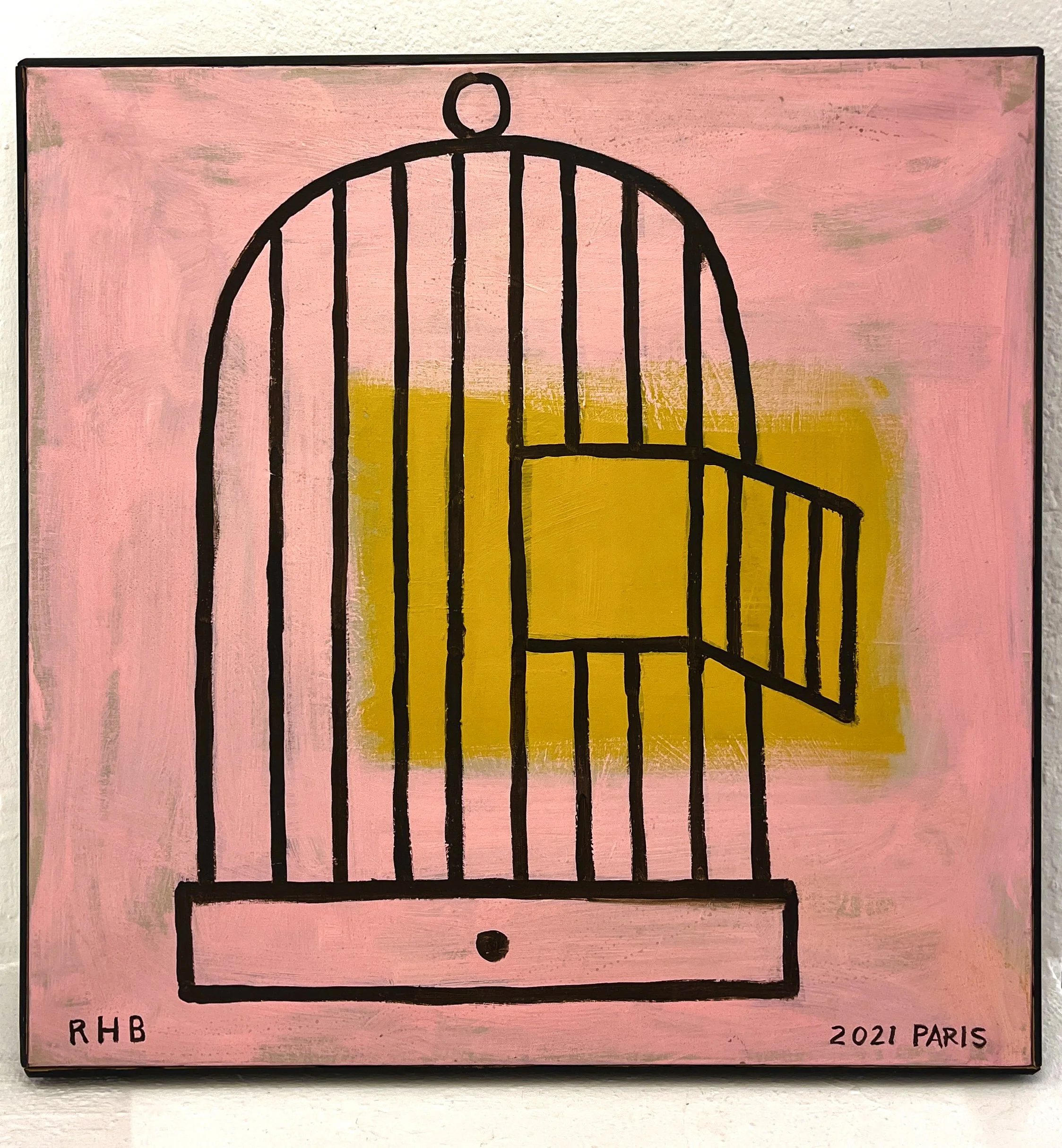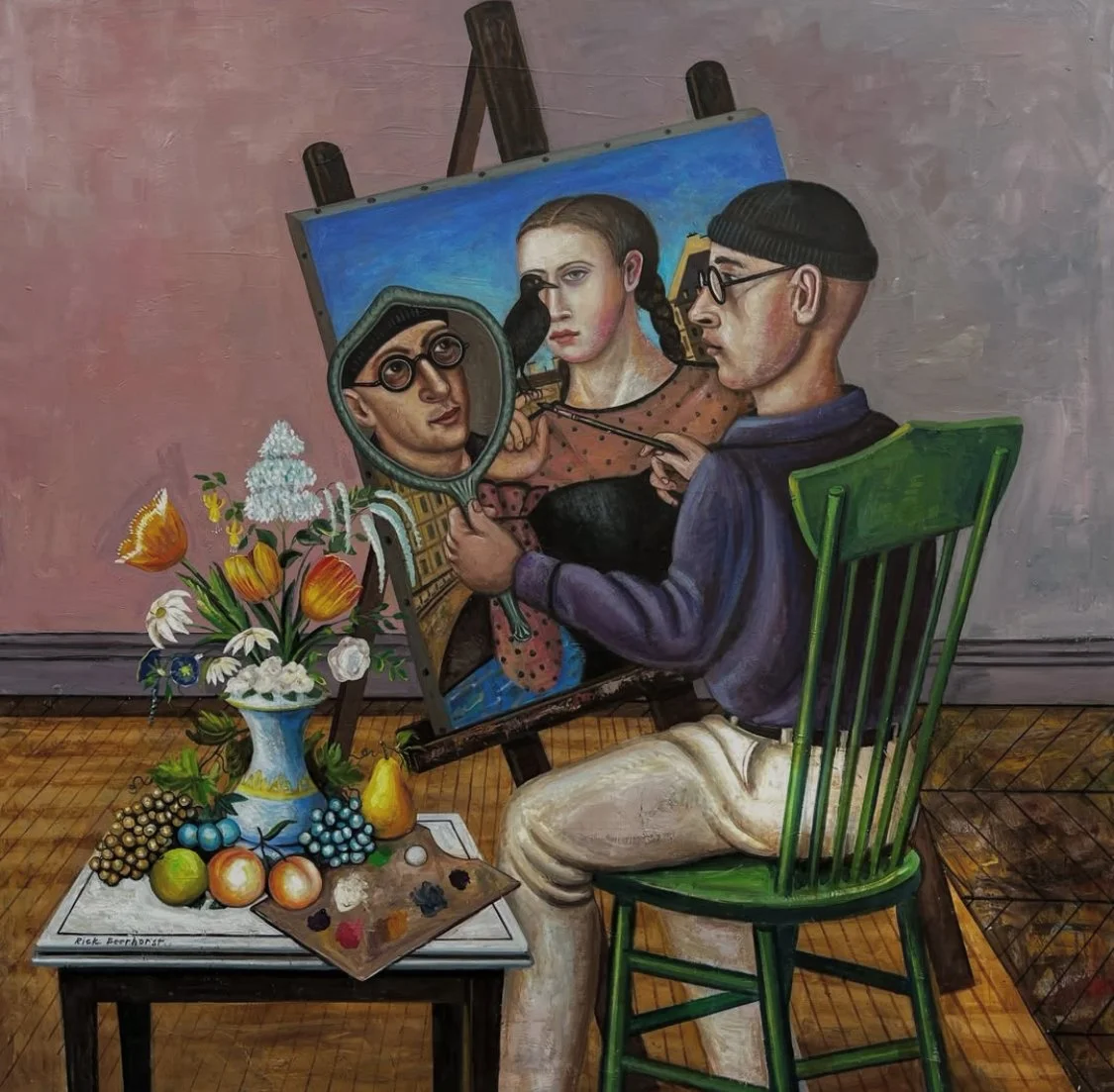In the Footsteps of Gertrude Stein
Our first Voltaire Salon 11-15-25
Last Saturday night, we had the joy of hosting our very first Voltaire Salon with ten wonderful guests. Two of our dear friends, Pascal and Bastian, have this rare gift: they genuinely love people and seem to know just about everyone. Naturally, we made them our salon ambassadors, inviting them to connect us with like-minded souls who’d be drawn to an evening like this.
So, what exactly is the Voltaire Salon? Imagine our home: it’s on the fifth floor of a 200-year-old stone building on Boulevard Voltaire, right in the heart of the 11th district of Paris. This is where I share a life and a living space with fellow artist and companion, Véronique Cauchefer. Our vision is to host a recurring gathering here, creating a nurturing community around our art practice and offering inspiration to everyone who walks through the door.
We’ve always been inspired by the legendary gatherings of Gertrude Stein and Alice B. Toklas in their Paris apartment in the 1920s. Those salons were the cradle of modern art and literature. It’s where Matisse first encountered Picasso, where Hemingway was encouraged by Gertrude to step beyond journalism and truly find his voice as a novelist. These gatherings brought together artists, writers, and thinkers who might never have crossed paths otherwise — and from that alchemy, whole movements were born.
By weaving in this bit of history, we’re not just hosting a gathering — we’re tapping into a lineage of creative community that has thrived for generations. And in doing so, we invite our guests to become part of that ongoing story.
And of course, if you find yourself circling a piece or considering a first purchase, just send me a message on Instagram @richardbeerhorst. I’m always happy to guide you.
Stand and Deliver / Tiens bon et donne la vie
The night the midwife didn’t come became the night I was born too — not as a child, but as a man who learned to stand and deliver.
November 12th, Saturday — Samedi 12 novembre
Dove when she visited me in Tuscany on Mt Amiata
The power of intention is simply everything. And now that I’m here—the smell of a buttery warm croissant, the seagulls over the Seine, the buildings that have stood here shoulder to shoulder for centuries—it all feels not only perfect but better than anything else I’ve ever known.
As I sit here now, everything feels steady, luminous. But I know that calm only because I’ve met its opposite. Twenty-three years ago, in a small house in Grand Rapids, I was tested in a way that changed me forever.
It was 3:30 in the morning when it became clear the midwife was not coming and we would have to deliver this baby on our own. Those first moments of realization were sheer terror, quickly followed by the quiet command to act.
We were living in our first house then, an old working-class Victorian wood-frame place tucked inside a tough neighborhood—welfare mothers, grandmothers in at-home hospital beds, street gangs like the Cherry Boys and the Logan Doggers. Prostitution at one end, a big church parking lot at the other, where one, two, sometimes three police cars sat idling in the dark—probably chatting, smoking, or filling out their endless forms while the rest of us learned to sleep through the sirens and random gunshots.
And there we were, in that same neighborhood, ready to deliver our fourth child. Her water broke at 3:33 a.m. I called our midwife, Yolanda, who said, “I’m putting on a pot of tea and will be there soon.” But soon was not soon enough, because that’s when my wife screamed, “The baby’s coming now!”
She was standing, leaning against the porcelain pedestal sink, caught in the rhythm of those hard contractions. The baby wouldn’t come down. I could feel something wasn’t right. Doing what I had seen Yolanda do with our other births, I slipped my hand inside her with my first two fingers extended until I could reach under the cord—wrapped not once but twice around the baby’s neck.
It felt just like an old-fashioned telephone cord. I slipped it off, and in that instant she was free. The very next contraction came like thunder, and Dove was suddenly in my hands—warm, slippery, and full of wiggling life.
The room went silent for a beat, then flooded with sound: her cry, our laughter, our cheeks wet with tears, the rush of water still running from the tap. Relief and awe mixed into something electric. There was blood on my arms, steam on the mirror, the first hint of morning pressing at the window.
I remember grabbing a pie spatula from the kitchen to clean the mess from the yellow pine floor of our bathroom. The smell of birth, metal, and soap all tangled in the air. And then, as if on cue, Yolanda finally arrived—just in time to oversee the passing of the placenta and snip the cord.
That night changed everything. What looked like disaster had become miracle. The fear that had gripped my chest turned to stillness, and something ancient took over—something that knew exactly what to do.
From that moment forward I carried the truth that was born with her: when it seems like the worst thing possible is happening, that’s the moment you stand and deliver. Every collapse carries a secret instruction; every terror conceals a hidden grace.
When I look back now, I see that night not only as Dove’s birth but as mine—the birth of the indestructible version of myself, the one who knows that even in the darkest hour there is always a way through, always the possibility of miracle.
Written from Paris, twenty-three years later.
...always the possibility of miracle.
*Written from Paris, twenty-three years later.*
— ✦ —
Le pouvoir de l’intention, c’est tout. Et maintenant que je suis ici — l’odeur d’un croissant chaud et beurré, les mouettes au-dessus de la Seine, les immeubles serrés les uns contre les autres depuis des siècles — tout paraît non seulement parfait, mais encore meilleur que tout ce que j’ai connu.
Assis ici, tout semble paisible, lumineux. Mais je connais cette paix parce que j’en ai déjà rencontré l’opposé. Il y a vingt-trois ans, dans une petite maison de Grand Rapids, j’ai été mis à l’épreuve d’une manière qui m’a changé pour toujours.
Il était trois heures et demie du matin lorsque j’ai compris que la sage-femme ne viendrait pas et que nous allions devoir faire naître ce bébé seuls. Les premières secondes furent de la pure terreur, vite suivies par une voix intérieure qui disait simplement : agis.
Nous vivions alors dans notre première maison, une vieille demeure victorienne en bois, au cœur d’un quartier difficile : mères au chômage, grands-mères alitées dans leurs lits d’hôpital à domicile, gangs de rue comme les Cherry Boys et les Logan Doggers. De la prostitution à une extrémité, et à l’autre un grand parking d’église où une, deux, parfois trois voitures de police restaient au ralenti dans l’obscurité — sans doute en train de discuter, de fumer ou de remplir leurs interminables formulaires — pendant que nous apprenions à dormir malgré les sirènes et les coups de feu sporadiques.
Et c’est là, dans ce même quartier, que nous nous apprêtions à accueillir notre quatrième enfant. Sa poche des eaux s’est rompue à 3 h 33. J’ai appelé notre sage-femme, Yolanda, qui m’a dit : « Je mets de l’eau à bouillir pour le thé et j’arrive bientôt. » Mais bientôt n’a pas été assez tôt, car à ce moment-là ma femme a crié : « Le bébé arrive maintenant ! »
Elle était debout, appuyée contre le lavabo en porcelaine, secouée par le rythme puissant des contractions. Le bébé ne descendait pas. Je sentais que quelque chose n’allait pas. Faisant ce que j’avais vu Yolanda faire lors des autres naissances, j’ai glissé ma main à l’intérieur, les deux premiers doigts tendus, jusqu’à sentir le cordon — enroulé non pas une, mais deux fois autour du cou du bébé.
C’était comme un vieux cordon de téléphone. Je l’ai délicatement fait passer par-dessus, et à cet instant, elle était libre. La contraction suivante est arrivée comme un coup de tonnerre, et Dove était soudain dans mes mains — tiède, glissante, pleine de vie.
La pièce est restée silencieuse un bref instant, puis tout s’est empli de sons : ses pleurs, nos rires, nos joues mouillées de larmes, l’eau qui coulait toujours du robinet. Le soulagement et la joie se mêlaient en une énergie presque électrique. J’avais du sang sur les bras, de la buée sur le miroir, et la première lueur du matin glissait à travers la fenêtre.
Je me souviens avoir attrapé une spatule à tarte dans la cuisine pour nettoyer le sol en pin jaune de la salle de bain. L’odeur de naissance, de métal et de savon flottait dans l’air. Et puis, comme par miracle, Yolanda est enfin arrivée — juste à temps pour veiller à la délivrance du placenta et couper le cordon.
Cette nuit-là a tout changé. Ce qui ressemblait à un désastre s’est transformé en miracle. La peur qui m’écrasait la poitrine s’est changée en calme, et quelque chose d’ancien a pris le relais — quelque chose qui savait exactement quoi faire.
Depuis ce moment, je porte en moi la vérité née avec elle : quand tout semble s’effondrer, c’est justement l’instant où il faut tenir bon et donner la vie. Chaque effondrement contient une instruction secrète ; chaque terreur cache une grâce dissimulée.
Quand je regarde en arrière aujourd’hui, je vois cette nuit non seulement comme la naissance de Dove, mais aussi comme la mienne — la naissance de cette version indestructible de moi-même, celle qui sait que, même dans la plus sombre des heures, il y a toujours un passage, toujours la possibilité du miracle.
Écrit à Paris, vingt-trois ans plus tard.
What the Mountain Taught Me About Meaning
After months of living alone on Mount Amiata in the Tuscan wilderness, I left with only what would fit in a duffel bag.
No Wi-Fi, no convenience — water carried in from a spring, firewood cut by hand, and silence that chiseled away everything non-essential. That mountain reminded me that meaning isn’t streamed; it’s carved, hauled, and earned by hand.
My paintings come from that place — a cantilever over the digital flood. They carry the smoke of that stone house, the breath of the forest, the proof that the real still matters. Every brushstroke is a way back home.
To live now in Paris, in this luminous apartment on Boulevard Voltaire, feels like the plush lap of luxury. I see that our lives need the deep cut of contrast in order to rise into the sublime.
I left the forest, but it remains inside me. That re-wilding led me back to the boy of thirteen — sitting in the woods with a pencil and a sketchbook — rediscovering the freedom that begins where the street ends and the wild begins.
Ce que la montagne m’a appris sur le sens
Après des mois passés seul sur le mont Amiata, dans la nature sauvage de Toscane, je suis parti avec seulement ce qui tenait dans un sac de voyage.
Pas de Wi-Fi, pas de confort — l’eau puisée à la source, le bois coupé à la main, et le silence qui a façonné en moi tout ce qui devait disparaître. Cette montagne m’a rappelé que le sens ne se diffuse pas ; il se sculpte, se porte, et s’obtient à la force des mains.
Mes peintures viennent de cet endroit — comme une console suspendue au-dessus du déluge numérique.
Elles portent la fumée de cette maison de pierre, le souffle de la forêt, la preuve que le réel compte encore.
Chaque coup de pinceau est un chemin de retour vers la maison.
Vivre aujourd’hui à Paris, dans cet appartement lumineux du boulevard Voltaire, c’est ressentir le velours du luxe.
Je comprends que nos vies ont besoin de la profonde entaille du contraste pour s’élever vers le sublime.
J’ai quitté la forêt, mais elle demeure en moi.
Ce retour au sauvage m’a ramené vers le garçon de treize ans — assis dans les bois avec un crayon et un carnet de croquis — retrouvant la liberté qui commence là où la rue s’arrête et où le sauvage reprend ses droits.
Cette lettre est aussi une invitation : à retrouver votre propre parcelle de nature sauvage, quelle qu’en soit la forme.
Un lieu où le silence parle, où le réel revient, et où la vie retrouve le goût du travail des mains.
No More Playing Small
Last night found me wiping away tears as the credits rolled on the new Springsteen biopic Deliver Me From Nowhere.
It’s the story of an artist using poetry and rock & roll to pull himself out of the haunted house he grew up in. We were given glimpses of Springsteen pouring out his heart on stage, drenched in sweat before a fast-growing audience during his breakout years.
But the part that really undid me — the one that took forty-five years to be told — was the story behind the curtain: a young man nearly overcome by the same darkness that had haunted his father. This was Bruce not yet “The Boss,” a man who almost didn’t make it out alive.
We saw how his manager and a diner-waitress girlfriend anchored him back to solid ground. They gave him both the truth and the love that kept him from disappearing into the black hole of his own success.
The fact that Bruce Springsteen didn’t become just another post-star casualty — crashing into an early death — had everything to do with the people who gave him something real to hold on to. Real friendship. Real truth. The kind that gives a man the courage to face his ghosts and stop running.
He had to choose not just to survive, but to rise up and play the role of a man honest about who he was and where he came from.
This hit me hard last night because in the months since the violent assault this summer, I’ve found myself teetering on the edge of my own darkness again.
My tears came from the resonance chord tugging at my heartstrings — a reminder that the era of playing small is over. There’s no more hiding behind the quiet.
It’s time to stand in the full heat of the stage lights, unflinching.
—Rick
Paris, October 2025
If you’re done playing small, this is your invitation to step into the fire with me.
Book your consultation →
This is not nostalgia. It’s ignition.
Over the past several days, I’ve been pulling my images, my work, my story out of digital corners — Facebook, Flickr, Instagram — and bringing them home to Pinterest.
Pinterest has become my loom. Each image a thread. Each thread a part of a story that has been waiting to be seen whole.
As I gather them, something stirs.
A sleeping part of me sits up.
This is what it means to re-member:
to wake from the enchanted sleep of forgetfulness
and feel the pulse of our own myth again.
This isn’t just my awakening.
My re-membering is yours, too.
It belongs to all of us who have forgotten our own magnificence,
who have allowed the misty amnesia of time to dull our edges.
This letter is the kiss —
the moment the spell breaks
and the body of your story wakes up again.
Not long ago, teenagers spent their afternoons building treehouses or Lego starships.
Now, many of them build worlds in cyberspace on borrowed laptops — transforming scattered bits of code and vision into new abundance.
That image has been echoing in me lately. Because in my own way, I’m doing something similar right now:
spreading out the puzzle pieces of my pilgrimage on Pinterest like a map on a coffee table.
And as the pieces come together, so does the narrative arc of my life.
Once the story is visible, the future stops hovering at the horizon.
It starts humming like a finely tuned engine, ready to run.
If this sparked off something that is awakening in you perhaps we should work together. If that sound good go over hear
The Dusty Lego Bin
I’m now standing in a place where I have a real audience reading my work — and some of these people are rather famous, important, accomplished.
Well, they’re all important, of course.
These days I am living right now are not quite the payout times. This is not when the checks get cashed, the reservations are made, the clothes are purchased, and the rewards of a long creative pilgrimage finally begin to unfold — but it’s damn close.
I find myself in an exceedingly powerful position because these are the days of the creative. The ones who excelled in school by following rules, doing their homework, and extra credit — they are becoming the dinosaurs, stuck in the tar pits of fear, worrying about AI taking over. They lament smartphone addiction and the fact that kids don’t build treehouses anymore, missing that these kids are busy designing apps with AI, becoming the next multimillionaires, while the plastic bins of Legos gather dust.
The future doesn’t belong to those who cling to what was.
It belongs to the ones who can imagine something that doesn’t exist yet — and have the nerve to build it.
That’s what artists have always done.
We don’t wait for permission.
We don’t wait for the map.
We make the map.
I’ve learned how to die and be reborn while still alive. I’ve lived multiple lives in this same body. I am a ninja pivoter — beyond resilient, unsinkable, a shape-shifter. I will thrive in this new world because I was made for it.
Legos weren't my generation. I can still hear the sound of my son raking through his plastic bin looking for that right piece. I loved knowing he was doing something that connected his hands with his brain. That’s a good memory but I’ve lived enough lives to know the world is built and rebuilt by those willing to imagine something new.
Love Letters From Paris: Morning Pages
Artist and writer Richard Beerhorst shares his morning writing ritual from Paris, inspired by Julia Cameron and Neale Donald Walsch. A meditation on creativity, journaling, and the quiet holiness that begins each day with a Bic pen and a blank page.
When my Bic pen touches the paper in the morning, I have the sense of turning something on. It feels like a signal—an invisible bell summoning my unseen companions to come closer and lean in. This is my holy of holies, my personal sacred space. The blank white page before me is my life, waiting to be dreamed into existence.
I can’t quite remember when I began doing this regularly, but it must be over twenty years now. I first encountered the idea in The Artist’s Way by Julia Cameron, a book that speaks to the basic properties of creativity and how to protect this fragile, essential quality in one’s life. The world we currently occupy doesn’t exactly encourage the “artist’s way,” to say the least. In her groundbreaking book, Julia encourages the reader to write three pages of anything first thing in the morning.
This does at least two very important things. First, it’s a simple way of declaring, at the start of the day, that you are first and foremost a creator. Second, it’s a way of clearing the pipes—of letting the inner waters run free. When I was a boy growing up in the suburbs, we learned to let the garden hose run for a while before taking a drink. The first rush of water was warm, tasting of rubber. But if you waited, the flow soon turned cool and fresh. Writing morning pages is like that: letting the water run awhile.
It doesn’t matter so much what you write, only that you write. If you get stuck at the beginning, you can simply repeat a few sentences over and over. Eventually, the words, the sentences, and the ideas will begin to come.
For me, I like to write down my visions and hopes for the future as if they’ve already manifested. This enriches my imagination and draws my desired life into form. Sometimes I let my future self step through—offering words of wisdom and gentle encouragement from a higher mind. There are even mornings when my future self will ask what I would tell the version of me who was slugging it out ten years ago.
Another book that has shaped my morning writing is Conversations with God by Neale Donald Walsch. In it, Walsch describes a time when he was lost and discouraged. He began writing a letter to God, filled with complaints and questions, and was astonished to find words answering him—clear, loving, and wiser than his own thoughts. That spontaneous exchange became a dialogue with divine intelligence, eventually published in three books that have helped millions move beyond the stale image of an old man in the sky and toward a living, breathing relationship with the sacred.
Each morning I sit down in the dark, pre-dawn—it feels like the earth before God created the animals and the first pair of humans, or perhaps the hour before the Big Bang itself.
The pen meets the page, and something unseen stirs.
Paris listens.
My hand moves.
And the day, once again, becomes holy.
Explore more:
– Letters from Paris Archive
– About Richard Beerhorst
– Recent Paintings
Letter from Paris: The Bear in Exile
My dear,
This afternoon I write to you with the steady hum of traffic rising from five floors below on Boulevard Voltaire. On the table before me rests a cast-iron bear I unearthed from the back of Vero’s closet, its weight startling me like a relic that had been waiting.
My name, Beerhorst—“bear’s forest”—has always carried its own myth. The bear alone in his cave, breathing through the long winter, hidden yet alive. I feel the truth of that image in my bones now.
I came to Paris from Mallorca in the spring with hope burning quietly in my chest
A Flame Circle card ready to be written to a new subscriber
My dear,
This afternoon I write to you with the steady hum of traffic rising from five floors below on Boulevard Voltaire. On the table before me rests a cast-iron bear I unearthed from the back of Vero’s closet, its weight startling me like a relic that had been waiting.
My name, Beerhorst—“bear’s forest”—has always carried its own myth. The bear alone in his cave, breathing through the long winter, hidden yet alive. I feel the truth of that image in my bones now.
I came to Paris from Mallorca in the spring with hope burning quietly in my chest, ready for my second solo exhibition—this time with the El Habibi Galerie. But the opening passed without a single sale. Month after month my account drained while the paintings leaned against walls in silence, like mute companions.
Then came the night of rupture—dragged into the street half-naked and bloodied, stripped of safety and certainty. Since then I have slept on a friend’s couch, my small thirty-by-thirty canvases stacked in the corner of her storage room, an orchard of fruit still waiting for its harvest.
And yet, even in this exile, myth comes close. I think of David—anointed but driven into caves, hunted by Saul, kept alive by the wilderness. His story whispers that I, too, am not only displaced but prepared. That exile is not the end but the apprenticeship of kingship. That the cave is not only a refuge but a forge.
This is what myth does—it presses depth into our days when the surface would otherwise swallow us. It tells us the bear is not only an animal but a mirror, the bloodied man in the street not only broken but becoming. In a world dazzled by surfaces, myth reminds us of the subterranean currents shaping our lives. It turns our ache into an anvil, our wandering into initiation.
Even here, especially here, I trust I am still being shaped for more than I can yet imagine.
Yours,
Rick
Check out the Thirty by Thirty series — my alchemical passage from blood bath to artistic rebirth.
Letters From Paris: On Self Portraits
Dear friends,
I have made countless self-portraits over the years—drawings, block prints, paintings. In this, I follow a lineage I admire deeply: Rembrandt, Van Gogh, Frida Kahlo, and Howard Finster. Each of them stood before the mirror and took a long, unflinching look at themselves. That takes courage.
Self Portraits, 156 × 156 cm, 2021-23
Joe Dispenza often reminds us that where we put our attention is where we send our power. If this is true, perhaps these artists were not only observing themselves, but empowering themselves in the very act of painting their own image.
I know this has been true for me. When I face the mirror, I ask: Am I still on track? Am I following the arc of my own story, or have I drifted into old programs from my youth?
This unblinking gaze was what enabled Frida to alchemize her relentless pain into art; what drew Rembrandt deeper into the magical chiaroscuro of his shadows; what kept Vincent working in obscurity, ignored by the art world of his time. It even lifted Howard from being a dirt-poor Baptist preacher to standing on the stage of The David Letterman Show.
I’m always a little surprised when someone purchases one of my self-portraits. They feel so personal—more like a journal entry than a public statement. But perhaps that is their charm. They are raw, terrifyingly personal, and therefore alive in a way other pieces never can be.
Maybe that’s why people choose to live with them—because in the end, the courage to see oneself clearly is something we all long for.
If this letter resonated, you can stand closer to the work through the Flame Circle

